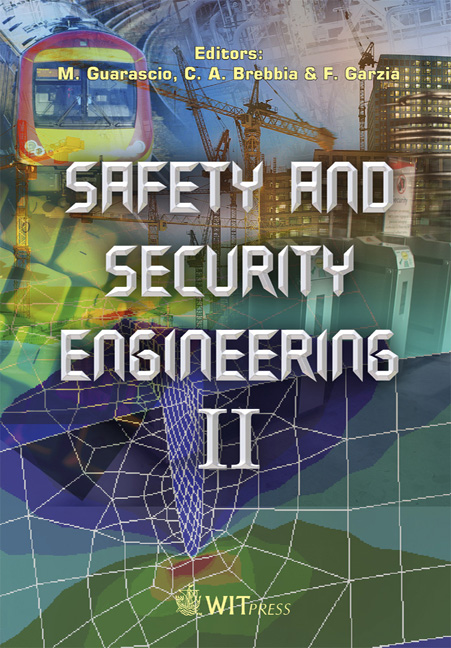Chemical Industrial Areas And Their Dynamic Danger Behaviour
Price
Free (open access)
Transaction
Volume
94
Pages
9
Published
2007
Size
455 kb
Paper DOI
10.2495/SAFE070541
Copyright
WIT Press
Author(s)
G. L. L. Reniers, A. Audenaert, W. Dullaert & K. Soudan
Abstract
Chemical industrial areas or so-called chemical clusters consist of various companies situated next to each other. Such areas are composed of hundreds of chemical installations exhibiting danger to a certain degree for initiating or continuing knock-on effects. In this paper, a methodology to model such clusters as networks and to investigate their dynamic danger behaviour is proposed. This original approach leads to a tentative strategy to optimally protect chemical industrial areas against security risks. Keywords: small-world behaviour, power-law functioning, network analysis, security management. 1 Introduction The emerging importance of so-called scale-free networks is a direct consequence of the widespread and multidisciplinary real-life occurrence of such networks, e.g. the world-wide web, social networks, terrorist networks, etc. (Barabasi [1]; Barabasi et al. [2], Buchanan [3]; Gong and Van Leeuwen [4]). In this paper the importance of such networks for the security management research field is examined. To diagnose a network as scale-free, it has to be typified by three main characteristics, i.e., (i) every pair of nodes can be connected through a short path within the network, (ii) the probability that two nodes are linked is greater if they share a neighbour, and (iii) the fraction of nodes with k neighbours decays roughly as a function of the form γ − k for some positive exponent γ.
Keywords
small-world behaviour, power-law functioning, network analysis, security management.





